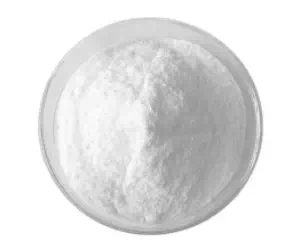Home >> Products >> Organic intermediate
Chemical Name: Potassium peroxymonosulfate
Chemical formula: H3K5O18S4
CAS number: 70693-62-8
Appearance: white crystalline powder
Purity: ≥99%
Water solubility: Soluble in water (100 mg/ml)

Potassium hydrogen persulfate (chemical formula KHSO₅) is an inorganic peroxide, usually in the form of a complex salt (such as the triple salt form KHSO₅·KHSO₄·K₂SO₄, trade name such as Oxone).
I. Water treatment field
Drinking water disinfection: As a highly efficient oxidant, it can kill bacteria, viruses and algae in water, especially suitable for small water treatment systems or emergency water purification. Compared with chlorine preparations, it has less residue and does not produce carcinogenic byproducts (such as trihalomethanes).
Degradation of organic matter: Oxidation and decomposition of difficult-to-degrade organic matter (such as dyes and pesticide residues) in sewage.
Decolorization and deodorization: Treatment of colored substances and odors in industrial wastewater.
Sludge treatment: Reduce sludge volume through oxidation and improve dehydration efficiency.
II. Disinfection and sterilization
Disinfection of medical environment
Prepared as a disinfectant, it is used for surface sterilization of medical devices and surgical instruments, and is effective against antibiotic-resistant pathogens (such as MRSA).
Agriculture and animal husbandry
Environmental disinfection of farms to control the spread of avian influenza, foot-and-mouth disease and other epidemics.
For sterilization of tools and irrigation water in fruit and vegetable cultivation.
III. Organic synthesis and chemical industry
Olefin epoxidation: converting olefins into epoxides (such as preparing epoxy resin precursors).
Alcohol/aldehyde oxidation: oxidizing primary alcohols to carboxylic acids and secondary alcohols to ketones under mild conditions.
Sulfide oxidation: oxidizing thioethers to sulfoxides or sulfones (such as key steps in drug synthesis).
Polymerization initiator
As an initiator in free radical polymerization, it is used to synthesize polymer materials (such as certain special plastics or coatings).
IV. Other industrial uses
Pulp bleaching
Replaces traditional chlorine bleaching agents, reduces the generation of toxic substances such as dioxins, and is used for environmentally friendly pulp production.
Oil extraction
As an oxidant for oil field acidification treatment, it decomposes organic blockages in the formation.
Laboratory analysis
Used for sample pretreatment in chemical analysis (such as digesting organic samples or releasing heavy metals).
Sales hotline:

 Scan and consult wechat customer service
Scan and consult wechat customer service